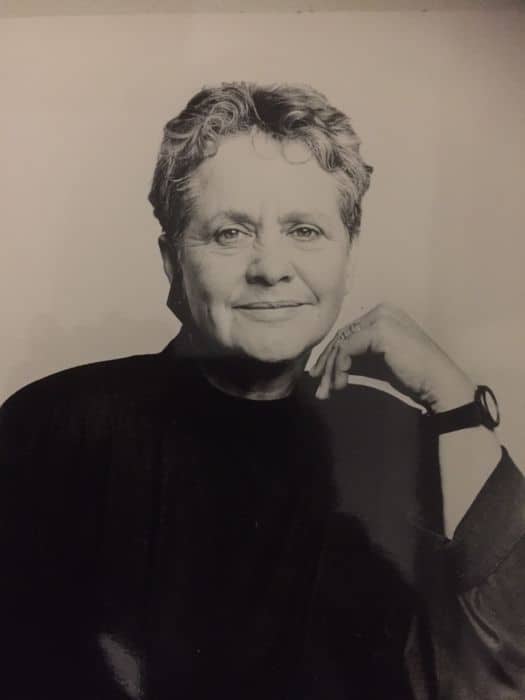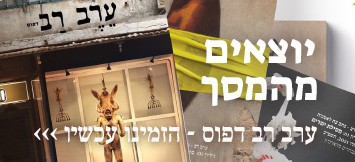A Short Biography
Born in Tel-Aviv-Yafo in 1932, Miriam Tovia Boneh graduated from Ha’Midrasha in 1962 and worked for a while as a practicing artist. Toward the end of the 1960s and early 1970s, while remaining in the art field, she shifted from working as an artist to teaching and curating. In 1978–1979, as a part-time curator for Ha’Kibbutz Gallery, she mounted more than twenty exhibitions, showcasing such artists as Avital Geva, Motti Mizrachi, Moshe Gershumi, Dalia Meiri, Chaim Maor, Uri Riezmann, Dov Heler, Michael Sgan-Cohen, and Gari Goldstein, among others.
In the 1980s, Tuvia Boneh’s teaching skills took center stage, as she held teaching positions at Shenkar College and the Kalishar School of Drawing, as well as the Academic Education College, Oranim, where as well as teaching, she also functioned as the head of the art department.
Returning to curating in the early 1990s, she was hired as the director and head curator at the Museum of Israeli Art, Ramat Gan. During her four years there, she mounted exhibitions by a range of artists, including Alima, Yair Garbuz, Roi Rozen, Buky Schwartz, David Vakstein, Zvika Kantor, Udi Aloni, Michael Sgan-Cohen, Belu-Simion Fainaru, Shoshi Karmouche, among others. She also invited several guest curators to arrange exhibitions, among them Adam Baruch, Gila Balas, and Surin Heler. In 1995, Tovia Boneh went on to serve as the head curator at the Haifa Museum of Art.

Miryam Tovia Boneh
My Encounter with Miriam Tovia Boneh
As I embarked on my MA thesis at Ben Gurion University of the Negev (BGU), entitled “Michael Sgan-Cohen’s Process of Reception into the Israeli Art Field,” supervised by Dr. Merav Yerushalmy, I discovered that Tovia Boneh had mounted two out of his three solo exhibitions. The first was shown in Ha’Kibbutz Gallery in 1978 and the second in the Museum of Israeli Art, Ramat Gan, in 1994.
It seems fair to say that Sgan-Cohen’s work was far from mainstream, as he drew inspiration from the Jewish sources in a conceptual way. Following his 1978 show, the critics, not understanding his work, viewed them as “creatures from another planet,” according to the psychologist and curator Itamar Levi. What, then, motivated Tovia Boneh to take a chance on this artist? What did she see and understand that others did not? In search of answers, I interviewed her at her home in Herzliya in March 2013. We chatted for about an hour and a half.
RR: What did you see in Michael Sgan-Cohen’s work that led you to curate his first solo exhibition at Ha’Kibbutz Gallery?
From her reply, I not only learned about her appreciation of his work but was also privileged to hear about her vision and understanding of the Israeli art field:
MTB: When I first saw Sgan-Cohen’s work, it shook me to my core!! By going back to the sources, to our roots, Sgan-Cohen tapped into what I consider to be true, authentic local art. This is what I believe Israeli art has to be. Not a field that looks toward Paris, imitating and modifying the Parisian School to suit Israel, but, rather, Israeli artists should be working from within the country. That is what I taught my students and also how I chose artwork when curating. Bezalel’s goal was indeed to create local art, but his artists did so by focusing on biblical personas or by molding religious artifacts. Sgan-Cohen, on the other hand, as he referenced texts from our Bible and Jewish sources, emerged with a new iconography, giving them visual expression and interpretation. Thus, his work, as it reflected Israeli society and who we are as a nation, did so in a unique, authentic, and local way. This is what I loved about his work, and this is what I respect about the aesthetic practice of many other artists who draw inspiration from local source.
Sgan-Cohen’s first solo exhibition led to a corpus of critical commentary heralded by Adam Baruch, a close friend and enthusiastic fan of his work. Strangely enough, Tovia Boneh was not mentioned at any time during Sgan-Cohen’s 25-year aesthetic career, nor has she been recognized for launching that career or for her unique insight and vision regarding his work.
RR: Why were you not acknowledged in the discourse around Sgan-Cohen’s reception?
She did not have a clear answer for me. She did, however, share her lack of interest in the critiques written about her shows and claimed never to have read them. Moreover, she refrained from writing and publishing her thoughts and understandings about the essence of Israeli art.
Thus, her ideas and revelations could only be seen and interpreted by way of her curating practice, a truth that was acknowledged and voiced by Adam Baruch, who often publicly applauded her work.
RR: What did your curating methodology entail?
MTB: I never approached a curating opportunity with an agenda, nor did I have a thesis in mind that needed works of art to support it. On the contrary, I met every artist with an open mind, curious to see what he/she had to offer. Intuitively, if the work touched my soul, made me think, caught me off guard, and/or surprised me, that show would come into being. This was my underlying principle when curating as I searched for true, indigenous art.
Here, clearly, we can see the modesty of Tovia Boneh. That is, rather than pushing a preconceived idea or a predetermined theory, she simply mediated between artist and viewer, quietly and humbly, letting the works and the shows speak for themselves.
As I now embark on my Ph.D. dissertation at BGU, again under the supervision of Dr. Merav Yerushalmy, entitled “The Rise of Contemporary Jewish Art in Israel,” I am once again confronted by the unique vision of Tovia Boneh which today is exemplified in the practice of Contemporary Jewish Art, as showcased at the Jerusalem Biennale, inaugurated in 2013 by Rami Ozeri. These events attract many of the silenced voices, marginalized over the years by the hegemonic Israeli art arena. As the artists reference the Jewish, many prevalent issues in Israeli society are brought to the fore, their work echoing Tovia Boneh’s aspirations for Israeli artists to create from a local source. Moreover, as this practice somewhat mimics the aesthetic practice of Michael Sgan-Cohen, we can perhaps see that Tovia Boneh, along with Sgan-Cohen and Adam Baruch, were indeed, well ahead of their time.
I believe that it is long past time to honor Miriam Tovia Boneh and acknowledge the manifold contributions of this prominent, modest Israeli art teacher and curator, who embodied the role of game-changer rather than gatekeeper in her quest to lay the foundations for “a true indigenous Israeli art.”













